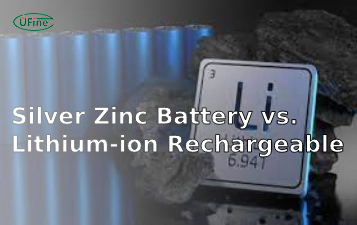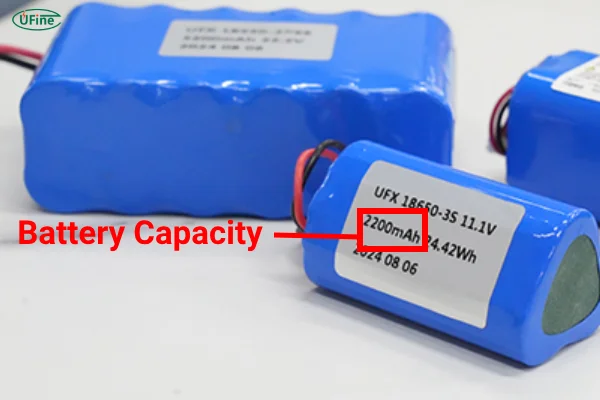
- Part 1. Ah hour, or amp hour
- Part 2. How to calculate battery amp?
- Part 3. How to increase battery amp?
- Part 4. Why are batteries of different voltages the same amp?
- Part 5. Where can I check the amp of the battery?
- Part 6. Are all amp batteries real?
- Part 7. Is a higher amp battery better?
- Part 8. What amp battery do I need?
Part 1. Ah hour, or amp hour
When dealing with batteries, you may have encountered the term amp hour (Ah) or ampere hour. It’s essential to understand what this measurement means and how it affects battery performance.
Ah, Ampere Hour or Amp Hour all describe the same characteristic of a battery. An amp hour (Ah) is a unit of electric charge that indicates how much energy a battery can store and deliver over time. Essentially, it measures a battery’s capacity—how long it can provide a specific current. For example, if you have a 1 Ah battery, it means the battery can deliver 1 amp of current for one hour.
Part 2. How to calculate battery amp?
When choosing or evaluating a battery, knowing how to calculate battery amps is crucial for understanding its capability.
To calculate the amp rating of a battery, you use the formula:
Battery Amp (A)=Battery Capacity (Ah)/ Time (Hours)
To calculate the amp rating of a battery, you use the formula:
For example, if you have a 12V battery with a 20Ah capacity and want to know how much current it will provide for a specific device:
Current (A)=20Ah / 4hours=5amps
To calculate the amp rating of a battery, you use the formula:
If the battery can provide 5 amps for 4 hours, you can estimate the amperage needed to run devices or determine how long your devices will operate based on the battery’s capacity.
Conversion of Watt Hour to Amp Hour (Wh to Ah)
Part 3. How to increase battery amp?
There are several ways to increase the amp rating of a battery, depending on what you’re trying to achieve:
-
Increase the Battery’s Capacity (Ah): This is the most straightforward way. By adding more battery cells in parallel, you increase the overall amp-hour rating while keeping the voltage constant. For example, adding two 12V 100Ah batteries in parallel will give you 12V and 200Ah.
-
Choose Batteries with Higher Amp Ratings: You can opt for batteries that come with a higher amp hour rating. For example, switching from a 100Ah to a 200Ah battery will double the amp capacity, thus allowing the battery to power devices for a longer period.
-
Increase the Discharge Rate: Some advanced batteries allow you to adjust the discharge rate (often denoted as C-rate). Batteries with higher C-ratings can safely provide higher amps without damaging the cells.
-
Use a Battery Management System (BMS): A BMS can help you safely increase the output of the battery pack by balancing the load across multiple cells. It ensures that no individual cell gets overcharged or over-discharged, increasing the battery’s overall efficiency.
Part 4. Why are batteries of different voltages the same amp?
You might have noticed that batteries with different voltages can sometimes have the same amp rating, such as 12V 100Ah and 24V 100Ah. This can be confusing, so let’s break it down.
Batteries with different voltages can still provide the same amp capacity because the total energy stored in the battery depends on both voltage and amp-hour rating. The main difference is that batteries with higher voltage (e.g., 24V) can deliver power over a longer distance and are typically used for larger systems, while lower voltage batteries (e.g., 12V) are used in smaller applications.
The total energy capacity is measured in watt-hours (Wh), calculated by:
Wh=Voltage (V)×Capacity (Ah)
To calculate the amp rating of a battery, you use the formula:
For example:
- A 12V 100Ah battery stores 1200Wh of energy (12V x 100Ah).
- A 24V 100Ah battery stores 2400Wh of energy (24V x 100Ah).
Despite both batteries having the same Ah, the 24V battery has twice the energy capacity because it operates at a higher voltage.
Part 5. Where can I check the amp of the battery?
Knowing the amp rating of your battery is critical, and luckily, there are several places you can check this information:
-
Battery Labeling: The most straightforward way to find the amp rating is by checking the battery label. Manufacturers usually indicate the amp-hour (Ah) rating on the battery’s label or datasheet.
-
Manufacturer’s Website: You can visit the manufacturer’s website to get more detailed specifications, including the amp rating, voltage, capacity, and other critical data.
-
Battery Testing: If you have a multimeter, you can test the current output of the battery. To do so, connect the multimeter to the battery terminals (set it to measure DC amps), and check how much current the battery can deliver under a load.
Part 6. Are all amp batteries real?
Not all batteries that claim to have certain amp hour (Ah) ratings are necessarily accurate. Some manufacturers may exaggerate or mislabel their battery capacities, so it’s crucial to test the batteries to ensure their performance matches their specifications.
Here’s how you can test the amp hour capacity:
- Discharge the Battery: Connect a known load (e.g., a light bulb or resistor) to the battery and measure how long it takes to discharge the battery completely.
- Monitor Voltage and Current: Use a battery tester or a digital multimeter to monitor the battery’s voltage and current during the test.
By monitoring the time it takes for the battery to drop to a certain voltage, you can estimate the real amp hour (Ah) capacity.
Part 7. Is a higher amp battery better?
A higher amp battery isn’t always better, and it depends on the context. Here are some factors to consider:
-
Application Needs: If you need to power devices for a longer period, a battery with a higher Ah rating will likely be better. However, if you only need a short burst of power, a smaller battery with a higher discharge rate may be sufficient.
-
Battery Size and Weight: A higher amp-hour battery will generally be larger and heavier. If portability is essential, you might need to balance the amp hour rating with the size and weight of the battery.
-
Efficiency: A larger amp hour battery may also take longer to charge, and depending on your use case, charging time can be an important factor.
-
Cost: Larger Ah batteries are often more expensive. Always consider whether the extra amp hour capacity is necessary for your application.
Part 8. What amp battery do I need?
Choosing the right amp battery depends on your specific needs:
-
Power Consumption: Look at the power consumption of the devices you intend to power. If the devices consume more energy, you’ll need a higher Ah battery.
-
Battery Life: Estimate how long you want the battery to last. If you need to run devices for several hours, consider a battery with a higher Ah rating.
-
Voltage Requirements: Ensure the voltage of the battery matches the voltage requirements of your device.
-
Size and Weight: If you need portability, you might want to opt for a smaller, lighter battery, even if it has a slightly lower Ah rating.
Related Tags:
More Articles

What is the Difference Between Silver Zinc Battery vs. Lithium-ion Rechargeable?
Compare silver zinc and lithium-ion rechargeable batteries: energy density, cycle life, safety, cost, and uses in drones, medical devices, EVs, and electronics.
What are Watts and Watt Hours in Battery?
Understand watt vs watt-hour in batteries: key differences, how to calculate capacity, and why they matter. Includes free comparison table.
Best 10 Blood Pressure Monitor Battery Review: Finding the Most Reliable
Are you looking for a reliable Blood Pressure Monitor battery? Here is a complete guide with the top 10 best blood pressure monitor batteries.
Bluetooth Headphone Battery Guide: All You Need to Know
Maximize headphone battery life with expert tips! Learn how to charge, check, troubleshoot, and choose the best bluetooth headphone battery in 2025.
LiFePO4 Battery VS. Lithium-ion Polymer Battery: Which One Is Best?
Comprehensive comparison of LiFePO4 vs Lithium Ion Polymer batteries: energy density, safety, lifespan, cost. Find out which battery suits your needs in 2025.



